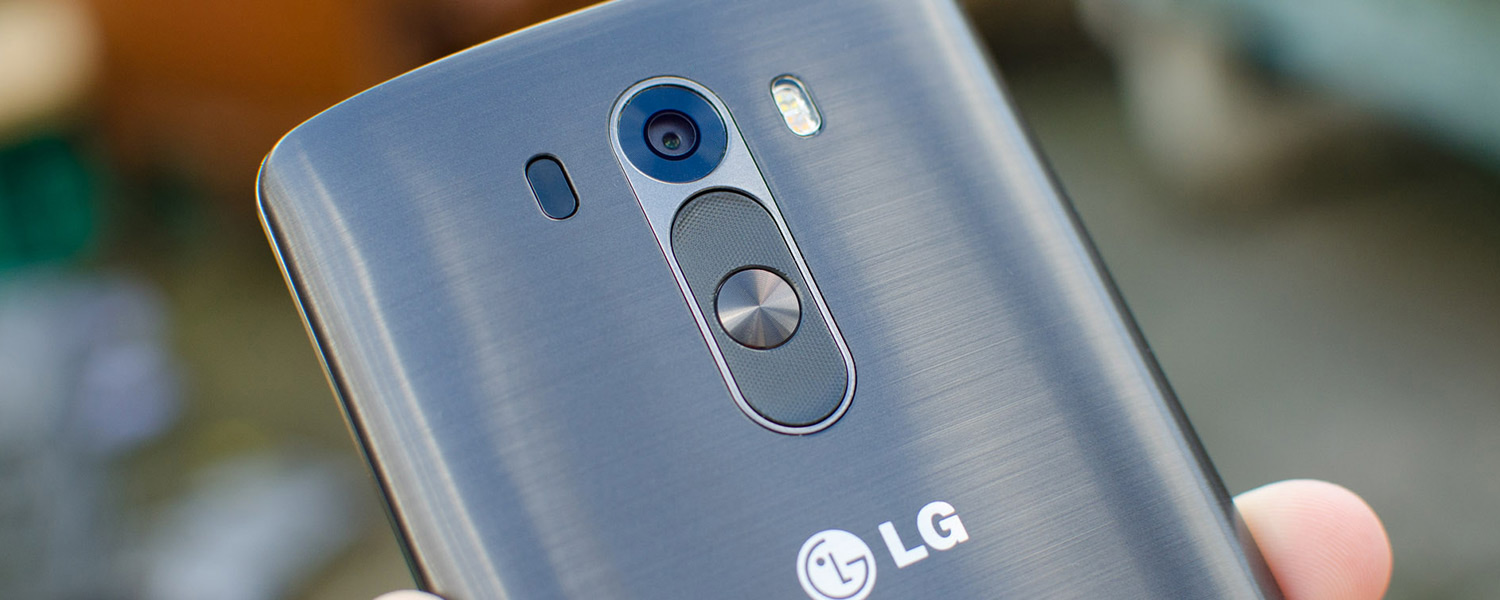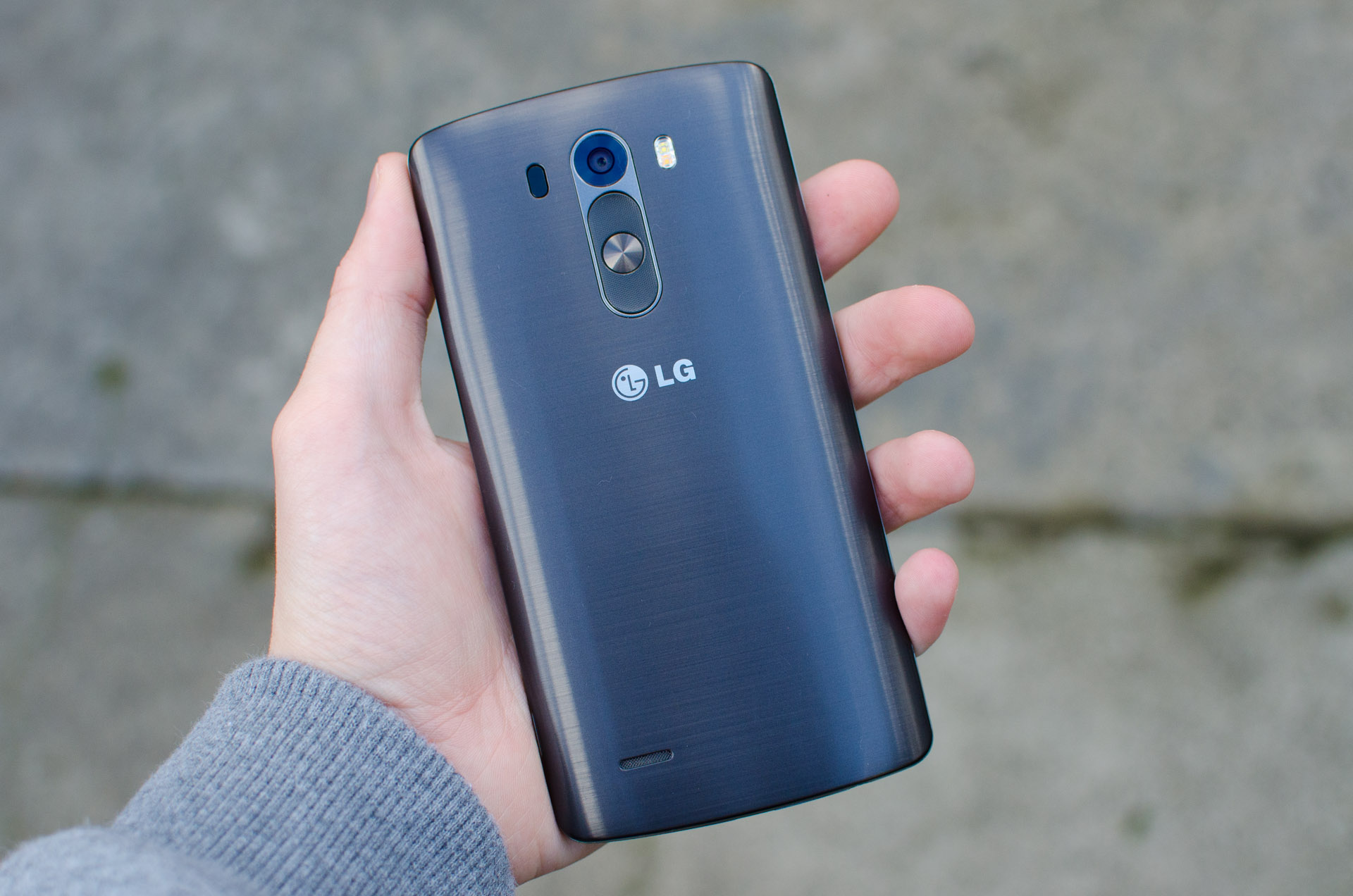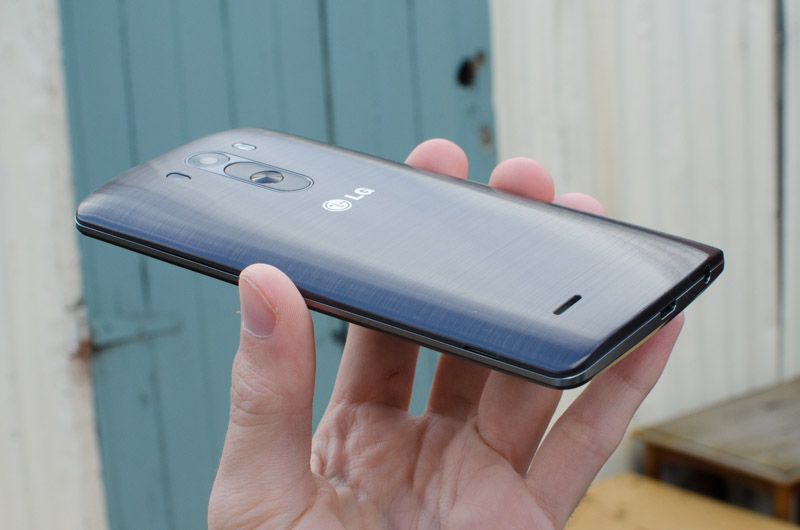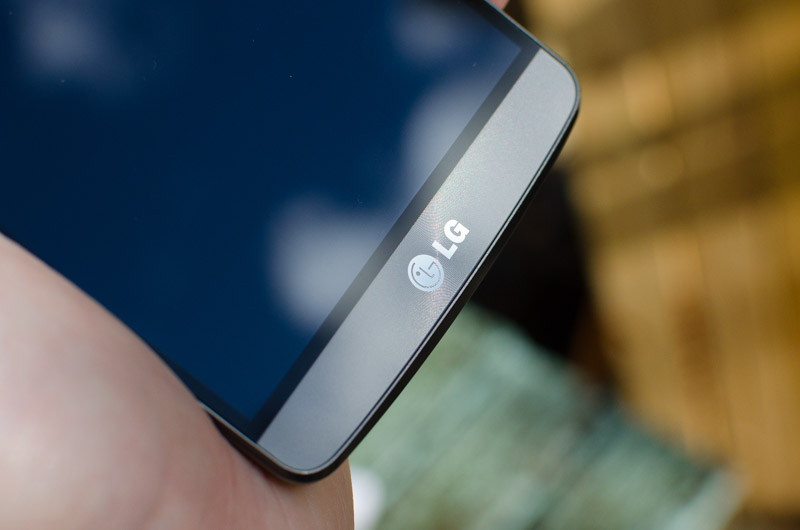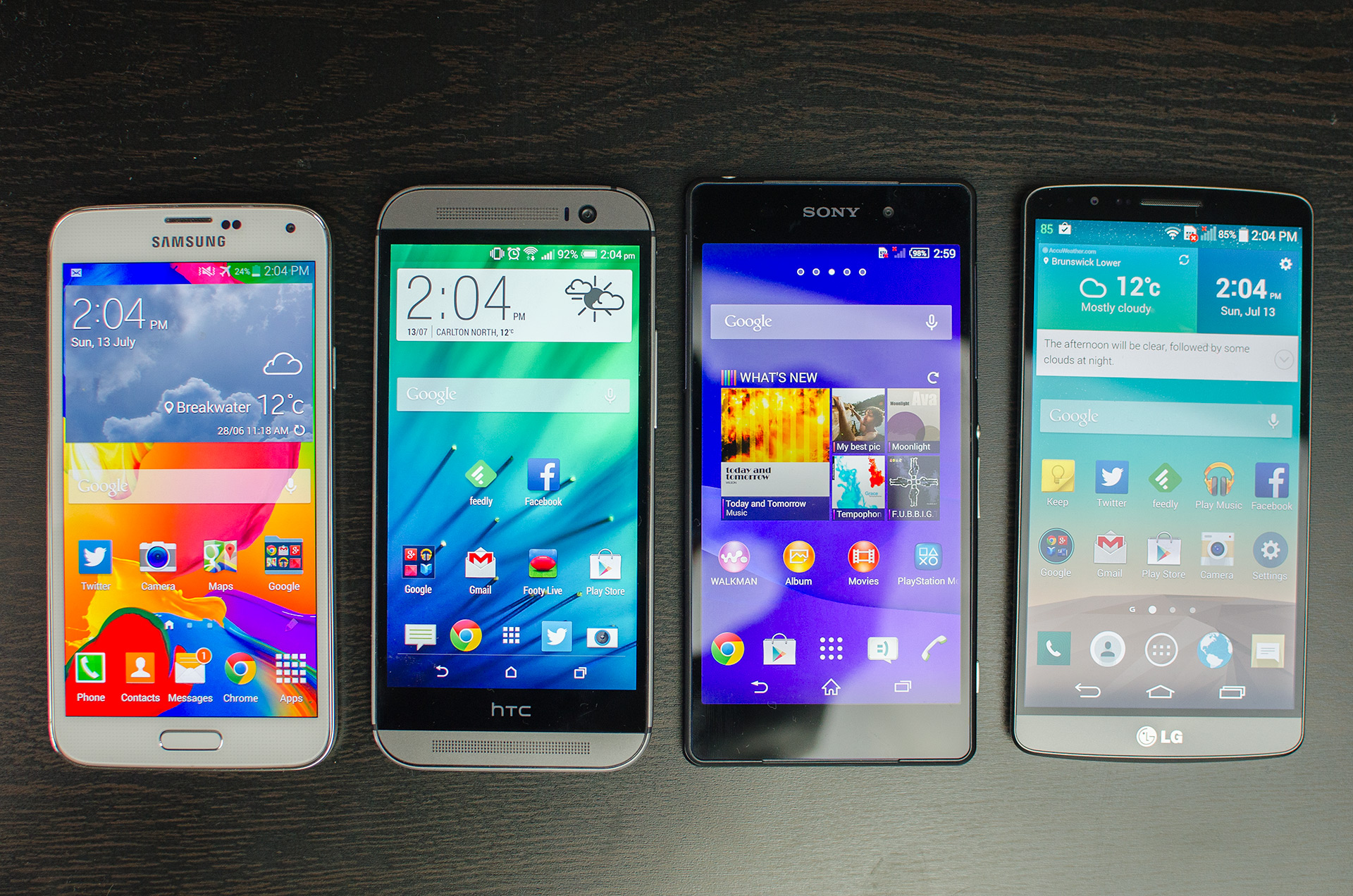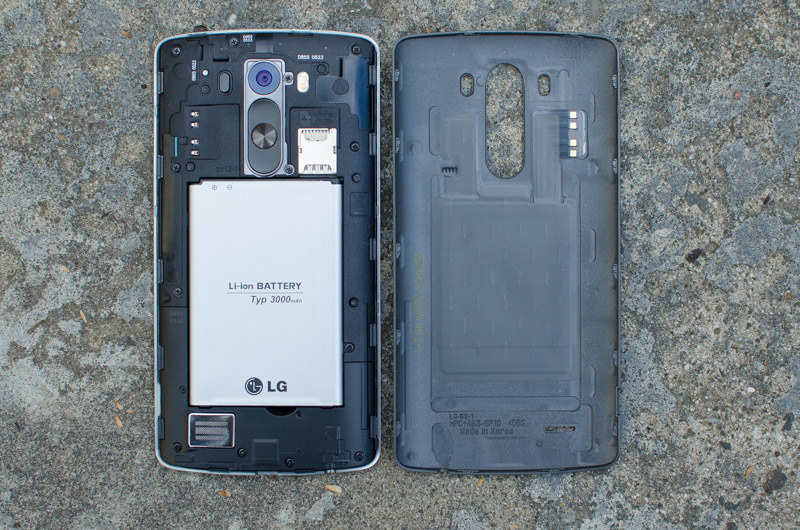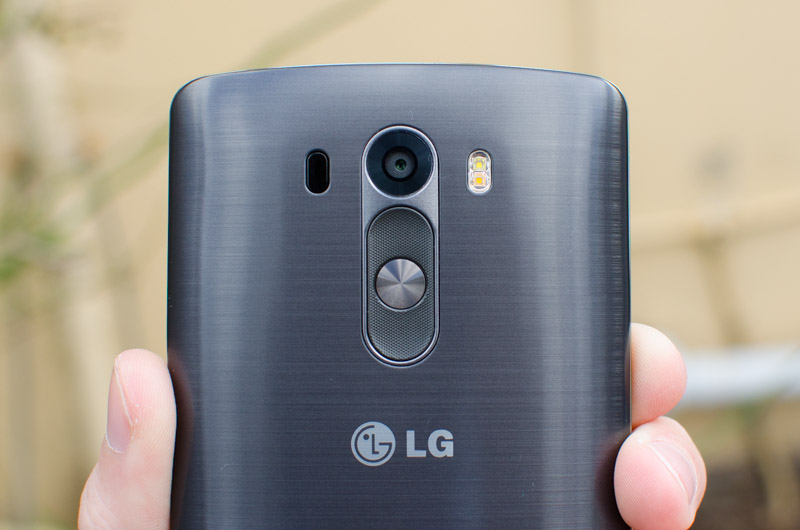The LG G2 was, perhaps surprisingly, my favourite smartphone of 2013. LG got so many things right with its previous flagship: the display and camera were fantastic, the performance was top-notch, the software had some useful additions, the design was ergonomic, and battery life was outstanding. It wasn't without a few quirks – like the power and volume buttons positioned on the back panel – but it was a well-rounded and extremely competent Android handset.
Touting several refinements and a new 5.5-inch Quad HD display, LG has brought to market the new LG G3. The new, larger display brings a resolution and pixel density above of what we've seen on the current crop of flagships. You also get a 13-megapixel camera with a unique laser autofocus system, and a Qualcomm Snapdragon 801 SoC that's at the top of its class.
On the software side, LG has praised a major clean-up to its Optimus UI which sits atop Android 4.4, giving it an overall simpler look and addressing some of the complaints users had with the previous model.
Not unlike other premium Android phone makers, LG has largely been tweaking the formula established with its previous flagship, adding better components and polishing up the package. No major shakeup has occurred, because no major shakeup was necessary.
The obvious question: is the LG G3 a significant upgrade on the G2, and is it enough to place it above the HTC One M8, Samsung Galaxy S5 and Sony Xperia Z2 in the high-end Android pecking order? It's time to find out.
Thanks to MobiCity for providing us with an LG G3 to review. Just for TechSpot readers, you can get $10 off any order over $50 by entering the code 'TECHSPOT' into MobiCity's checkout.
Design
For a smartphone with a sizable 5.5-inch display, the LG G3 is remarkably compact and easy to hold. It's the same height as both the HTC One M8 (5.0" display) and the Sony Xperia Z2 (5.2"), albeit slightly wider, and it's only marginally larger than the Samsung Galaxy S5 (5.1").
Meanwhile, it's significantly smaller than HTC's mid-range Desire 816 with its similarly-sized 5.5-inch display.
LG G3 - $680 unlocked
- 5.5", 2560 x 1440 IPS LCD display (534 ppi)
- Qualcomm Snapdragon 801 SoC
- 2.5 GHz quad-core CPU, Adreno 330 GPU, 2/3GB RAM
- 16/32 GB internal storage, microSD card slot
- 13 MP camera, 1/3" sensor, f/2.4 lens, 4K video
- 3,000 mAh, 11.4 Wh battery
- LTE, Wi-Fi a/b/g/n/ac, Bluetooth 4.0, NFC
- Android 4.4 'KitKat'
- 149 grams, 8.9mm thick
The small footprint can be attributed to LG's use of slim bezels around the display, which not only assists in usability, but makes the phone look great as well. The 76% display coverage is better than any of its competitors, and even though the phone is still large for a standard high-end smartphone, it doesn't feel bulky or cumbersome like other large-screened devices.
The use of small bezels has a few side effects. The space above and below the display has been reduced to the bare minimum, although there's still enough room for the front in-call speaker, front camera and a selection of sensors. Having these sections any smaller would make the smartphone a lot harder to grip and operate effectively, so kudos to LG for getting it just right.
The bezel size and curvature of the body has meant the main hardware buttons on the LG G3 are once again located on the back panel. In a section just below the rear camera you'll find the power button sitting in between the volume buttons, essentially in the same location as they were on the G2. However, LG has improved the design of the buttons by making them more rounded and curved, which makes them easier to find and hit when you can't see them.
Personally I have no issue with the location of the buttons, because after a week of use you become accustomed to their position. In some situations the power button falls in the exact right position for my usual smartphone grip, putting it in a better location than if it were on the sides. At other times I need to reposition my fingers, but that's typical for any smartphone design.
I do understand, however, that rear buttons aren't for everyone. LG compensates for this somewhat by allowing you to double tap the touchscreen to turn on (and sometimes off) the display, which is primarily how I used the G3. LG goes even further by providing Knock Code, which is something I'll discuss in the software section.
Aside from the physical buttons, the rear of the device also features the two-tone LED flash and laser autofocus system to the right and left of the camera respectively. The main speaker has moved from the bottom edge to the back panel as well, and although the quality is unsurprisingly lacking from the small 1W driver, it's very loud when it needs to be.
The body of the G3 is curved to the left and right side, making it fit nicely in your hand, while also disguising the thickness of the handset. At 8.9mm thick on average (10mm at its thickest point, near the camera), it's not huge anyway, but the curves assist in creating a more ergonomic frame.
Along the bottom edge you'll find the 3.5mm headphone jack and micro-USB charging port. The port is only USB 2.0, leaving Samsung as the only major smartphone vendor offering USB 3.0 support, although I'd put this down to the odd and potentially confusing shape of the micro-USB 3.0 port. The top edge features an infrared LED plus one of several microphones.
The entire front panel, including the patterned area featuring the LG logo, is made entirely of glass, which is smooth to touch and scratch resistant. However it's not the front I'm disappointed with.
The "metallic skin" LG has used for the removable back cover is a step up in terms of look and feel, but it's a fake. No part of the back is actually made of metal, instead it's smooth plastic with slight texturing. While I don't have a problem with some kinds of plastic, and generally speaking the G3's plastic is quite alright, real metal would give the device a truly premium look and feel.
From left to right: Samsung Galaxy S5, HTC One (M8), Sony Xperia Z2, LG G3
Comparing the G3's fake metal/plastic back to the HTC One M8's true aluminium unibody really shows the G3 to be a pretender, especially when you tilt the devices and notice the differences in reflective properties and finish between the two. Though one thing the metallic skin definitively solved was the fingerprint magnet issue the G2 had.
The entire back section lifts off to reveal the removable battery, microSD and micro-SIM slots. I'm still not a fan of the removable battery, as I feel a larger collection of cells could fit in if the plastic housings on both the battery and the phone were removed, but I'm sure the ability to hot-swap will come in handy to some people.
The actual piece of plastic used for the back panel is very solid, unlike on Samsung phones, giving good protection to the components and making it hard to remove. On the model I received to review, Qi wireless charging circuitry was included in the back panel, although some carrier-specific models in the US and Korea won't include this feature.
Visually I liked the multi-shaded look of the 'metallic black' G3 I received, although it also comes in silk white, shine gold, moon violet (what?), and burgundy red if you'd prefer something less plain.
